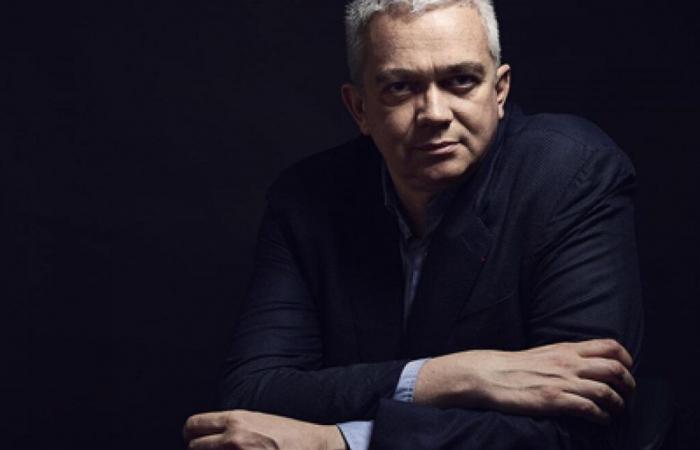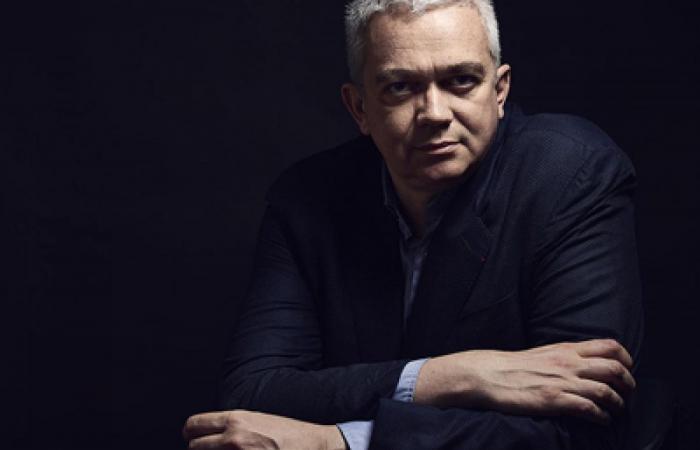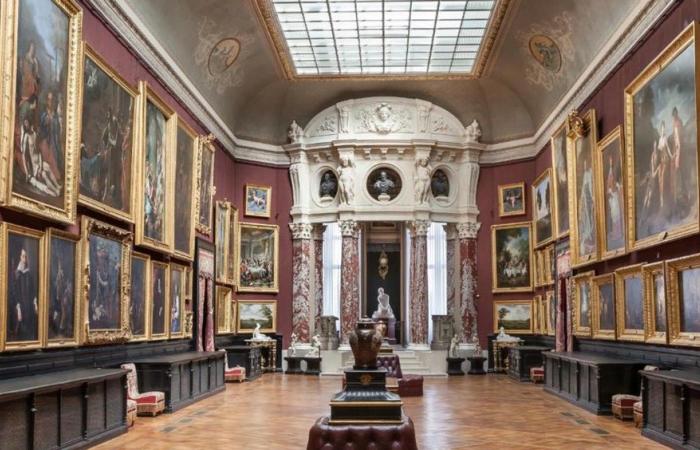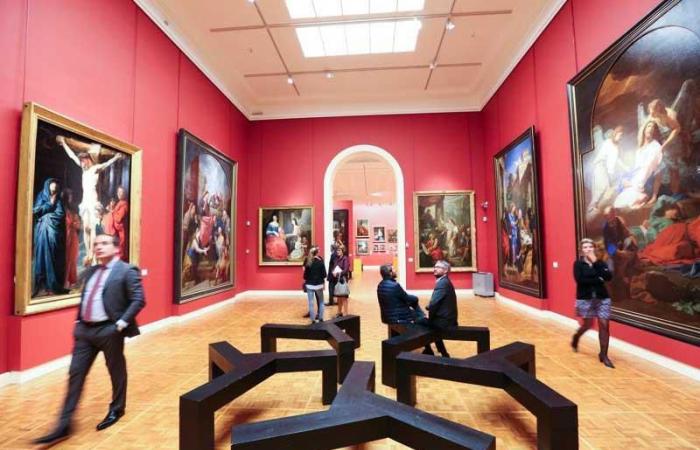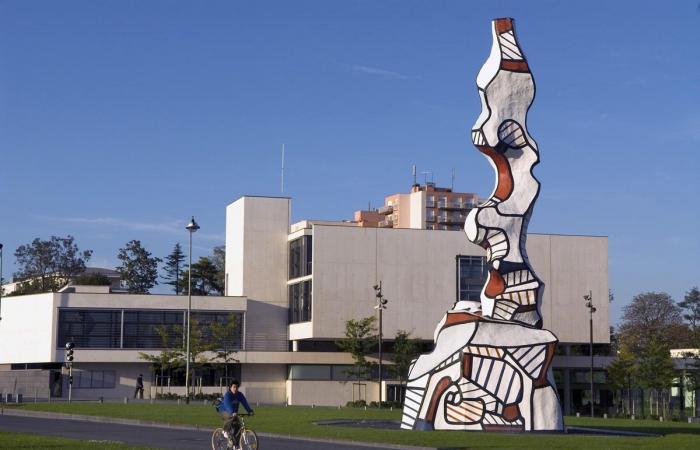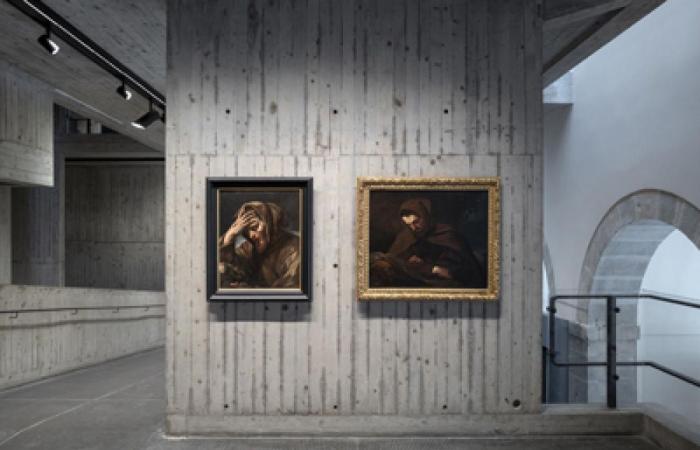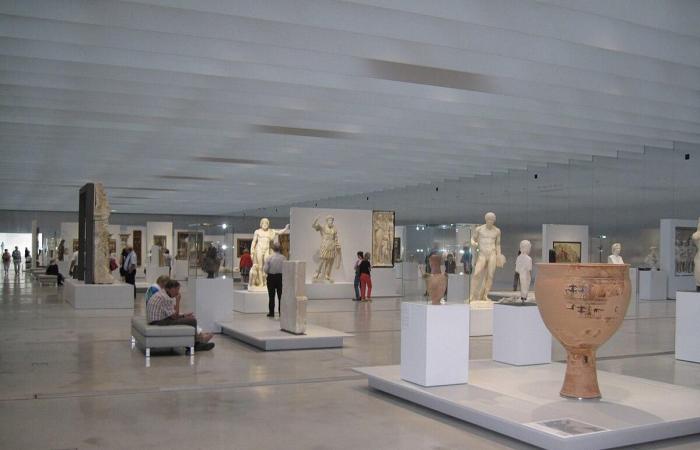Book –
Adrien Goetz takes his tour of the museums of France in 120 stages
The man wants to give visibility to little-known cities and places. The tone remains lenient. We are dealing with a notable person.
Published today at 3:52 p.m.
Adrien Goetz in 2016. The man has already published a lot.
DR.
Subscribe now and enjoy the audio playback feature.
BotTalk
“I was born in Caen and I learned to look thanks to the educational workshops at the Museum of Fine Arts…” The tone is set. At 58, Adrien Goetz has seen many other French institutions since. The man made a career out of it, before summarizing his achievements in a book now released by Grasset. He will offer his readers (seduced as much by his novels or his thrillers as by weekly articles in “Le Figaro”) one hundred and twenty “walks” in primarily regional institutions. One hundred and twenty like the days of Sodom according to the Marquis de Sade. It was necessary to make choices, even if certain entries summarize several places in the same city. Why did you elect this one, and not that one? But by abundance of riches, of course! And this even if the author remains more inclined towards the ancient than the modern. Public and private. Hence a Louvre de Lens and a Pompidou Metz, but no LUMA foundation or Château Lacoste. Places about which he would nevertheless have a lot to say, to criticize, even to slander.

Chantilly, fossilized, which serves as a starting and ending point.
Domaine de Chantilly, 2024.
The journey takes place by region, in a macrocephalic country (and no longer “macroncephalic”). The aim here is to give visibility to cities which no longer have much of it. We have never spoken so much among our neighbors about decentralization, while the “diagonal of the void” is now a chasm. So go visit the cities where Adrien Goetz describes the well-hidden wonders in places that sometimes scream poverty! We would therefore have to go with what remains of the second-rate SNCF network in Carpentras, where the Inguibertine Library has just been redeveloped. At the Agen Museum of Fine Arts, where everything revolves around a Gallo-Roman prune stone. Or even in Saint-Germain-en-Laye, whose castle houses a collection of national archeology also almost fossilized. The writer makes us want it. That was actually his intention. We must stop seeing museums as “instruments of distinction”, as in the time of the very scrogneugneu Pierre Bourdieu. “I will never forget my discovery of the Bayeux “tapestry”, a telluric shock, with school when I was eight, and a little later my dazzlement as a child at the Hospices de Beaune.” And yet didn't Goetz see there around 1960, like me, the nuns with their cornets drawn in the 15th century by Rogier van der Weyden, who left his most beautiful polyptych there!
“I will never forget my discovery of the Bayeux “tapestry”, a telluric shock, with school when I was eight, and a little later my dazzlement as a child at the Hospices de Beaune.”
Adrien Goetz
Adrien Goetz does not carry out an inventory each time, as if he were to replace the Michelin guides. He subjectively chooses a few works, places them in context and gives an overview of the history of the place. A story sometimes in motion. I have thus experienced three successive Nantes Museum of Fine Arts, all failures despite a very good stock. There have been successful moults in Grenoble, Colmar and Lyon. Misses (here, I'm speaking) in Aix-en-Provence or Bordeaux. The trouble is that a decor now lasts thirty years. Contemporary architecture becomes obsolete as quickly as computers. Lille, which marked the rebirth of colored walls around 2000, quickly took on the appearance of ruin. The same goes for the Augustins of Toulouse, a city where Goetz preferred to discuss the renovation of the Bemberg Collection. And I'm not sure that the Petit Palais d'Avignon has finally aged that well. I am less forgiving than Adrien when it comes to “70s taste”.

The Roubaix Swimming Pool. A unanimously acknowledged success.
DR.
The author has seen many rare things. I therefore admit that I don't know the Paul Dini Museum in Villefranche-sur-Seine, the Baron Martin Museum in Gray or the museum of the Royal and Military College of Thiron-Gardais, saved by Stéphane Bern. Given my age, however, I visited the Bonnat-Helleu Museum in Bayonne a long time ago, which “seems to be afflicted with a curse”. Farm. Still closed. The establishment with its magnificent collections had already been restored once. Adrien Goetz has encouraging words for almost everyone. It’s more about encouraging than handing out dunce caps. And then, you shouldn't fall out with anyone.

The Rennes Museum of Fine Arts, which has just changed management.
DR.
Because it must be said. The writer is one of the notables. He teaches at the Sorbonne and at the Ecole des Chartes. Today, the man is also part of the Academy of Fine Arts, whose members are almost immortals. He directs the Marmottan Library. All this while giving novels, some of which (“A Little Golden Legend”, “The Hairdresser of Chateaubriand”) seemed excellent to me, while his thrillers are, in my opinion, not worth a damn. What do you want? Goetz became a pure product of what we call “French excellence” beyond Jura after having studied at the Collège Louis-le-Grand then Normale Sup'. As covered in decorations as a Valais fighting cow in cockades, since 2007 he has directed “Grand Galerie”, the quarterly magazine of the Louvre. Suffice to say that this gentleman cannot afford to go out of his way. He would have the French museum world on his back. A universe that does not collectively shine with its broad-mindedness. Even though Louis “My museums in freedom”, says of course the title chosen by the author. Yes, but on parole.
Practical
“My museums in freedom, 120 artistic walks in France” by Adrien Goetz, Editions Grasset, 352 pages.

The MAC VAL, one of the rare contemporary places to have found a place in the book.
MACVAL, 2024.

Besançon, which combines old paint and raw concrete.
DR.

The Louvre in Lens, whose Gallery of Time, open free of charge, was recently renovated from top to bottom (even if there is neither bottom nor roof here).
DR
“Etienne Dumont’s week”
Every Friday, find the cultural news sketched by the famous journalist.
Other newsletters
Log in
Born in 1948, Etienne Dumont studied in Geneva which were of little use to him. Latin, Greek, law. A failed lawyer, he turned to journalism. Most often in the cultural sections, he worked from March 1974 to May 2013 at the “Tribune de Genève”, starting by talking about cinema. Then came fine arts and books. Other than that, as you can see, nothing to report.More info
Did you find an error? Please report it to us.

